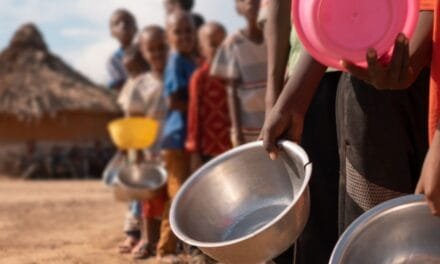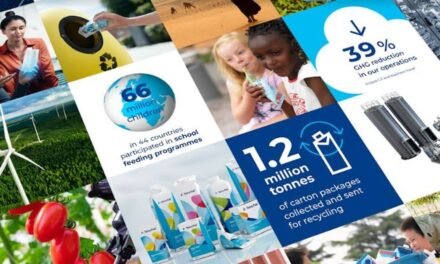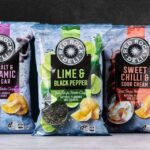Approximately 1/3rd of all food produced worldwide is thrown away, dumped, or otherwise squandered each year. An increase in food processing industry investment opens new packaging possibilities to reduce agricultural produce waste. There are numerous benefits to using environmentally friendly, sustainable and reusable food packaging, explors Rrajesh K Khosla.
We face an enormous challenge in ensuring that the world’s steadily expanding population has enough food to eat. Food consumption, nutrition, and food security are all issues that need to be addressed. Our actions have an impact on the natural world. Sustainable living boils down to balancing economic development and growth with the need to preserve and enhance our natural environment for future generations.
India’s food packaging market, estimated at USD 33.22 billion in 2020, is expected to grow at a compound annual growth rate (CAGR) of 29.88 percent between now and 2026. Consequently, the demand for high-quality packaged foods and beverages has increased in India.
In India, the food and beverage sectors are the primary drivers of the food packaging market’s growth. An increase in food processing industry investment opens new packaging possibilities to reduce agricultural produce waste. The rise in middle-class spending power the rapid expansion of organised retail and exports contribute to the market’s growth. There is an urgent demand for standard packaging that may help extend the shelf life of products, maintain manufacturing output, and ensure quality at the same time.
Packaging Material used for Food Packaging
Paper: As of 2019, the paper and paper-based material segment constituted 31.9 percent of the overall food packaging market revenue. An increasing number of people are using this product to replace non-biodegradable packaging. Paper packaging has gained over plastic and metal because of improvements in design, printability, and environment friendliness.
Plastic: Because of its low cost, plastic food packaging is predicted to rise rapidly with consumers. As secondary food packaging increasingly incorporates plastic films, it is expected to impact the industry positively. Product demand is also expected to be driven by the superior qualities of plastic packagings, such as higher sealing capacity and excellent protection against moisture ingress.
Metal Can: Canned food, fish, meat, and fruits are typical examples of metal wrapping. Metal cans are expected to become more popular because of the benefits of long-term storage, tamper-proof packaging, and nutritional preservation that they provide. Technology advances and design innovations are projected to fuel the category’s growth.
Glass: Glass packaging for food is expected to be worth USD 43.5 billion by 2027, thanks to its non-corrosive properties, which is expected to drive demand for the material. Direct food contact is possible because of its chemical inertness, recyclability, and non-permeability.
Glass containers are used for packaging a wide variety of foods. Some examples are coffee, spices, dry mixes and spices, processed infant meals, dairy products and spreads, syrups, processed fruit and vegetables, fish products, etc. Wine, spirits, liqueurs, soft drinks, and mineral water are commonly sold in glass bottles. Dry powder and granule items can be found in this food and drink category together with liquids, some of which are carbonated and heat-sealed foods and beverages. Glass food packaging accounts for 15 percent of the market share.
Also Read: EU Adopts Bold Packaging Rules for Waste Reduction and Recycling
Also Read: New Food and Beverage Carton Alliance Launched to Advance Sustainable Packaging
Online meal delivery is becoming increasingly popular, and packaged food is following suit, all of which is boosting industry growth due to the hectic pace of city life and rising incomes and living standards. Online food delivery companies like Zomato, Swiggy, and Dunzo are experimenting with glass packaging and restaurants to expand their market share safely and sustainably.
Most countries turned to glass packing during COVID-19. The food and beverage and pharmaceutical industries are increasing their demand on the industry. The COVID-19 pandemic has raised the need for medicine bottles, food jars, and beverage bottles, which have increased the demand for glass packaging.
Food counterfeiting is a significant driver encouraging the growth of the food packaging market, although constraints such as raw material price may limit the market’s growth.
The worldwide food sector loses billions of dollars each year due to food fraud. Many packaging materials, such as glass, plastic, and metal cans, can significantly prevent food counterfeiting. Anti-counterfeiting measures can be taken by adopting food traceability. Barcodes and radio frequency identification (RFID) tags help track food throughout the supply chain. As a result, the industry must ensure that items are adequately packaged to incorporate these new technologies. Anti-counterfeiting measures such as barcode labels on packed products reduce the prevalence of fakes.
The Food Packaging Industry’s Biggest Problem
Raw material price volatility will be a significant problem for the food packaging industry in the next few years. Glass, metal, plastic, and paper are a few packaging materials available for food storage. Food packaging cartons, for example, can be made from either recycled or virgin fibres. Due to the frequent fluctuation in the pricing of recycled and virgin fibre mills and raw materials, such as sand and soda ash, end-users are particularly concerned about the impact on their bottom lines.
Supplier profit margins will be reduced due to rising manufacturing costs and the volatile price of raw materials. Due to fluctuating raw material prices, companies like ours are obliged to raise the price of their products. Prices are predicted to rise due to increases in the cost of packaging raw materials such as paper, which are utilised to produce corrugated packaging.
Also Read: Innovative Edible Biofilm to Combat Food Waste and Boost Freshness
Also Read: Rise of Sustainable Food Packaging for a Greener Future
Food manufacturers help conserve natural resources by partnering with glass manufacturers
Glass is created from abundant natural raw materials like sand and glass waste (cullets), making it resource-efficient. A 100 percent recyclable material, the glass may be repeatedly reused in a close loop.
It is especially true for glass bottles, which can be recycled anywhere from 50 percent to 80 percent of the time on average. Glass recycling saves a lot of raw materials. It protects natural resources because it is so efficient. Cullet supplied by food firms, which are returned to the manufacturers, can be melted at a lower temperature than raw materials. As a result, the melting process uses less energy.
Approximately 1/3rd of all food produced worldwide is thrown away, dumped, or otherwise squandered each year. It equals 1.3 billion tonnes of food waste and a massive amount of money thrown away every year. For decades, people have used food packing to preserve food. Non-biodegradable litter is an unfortunate side effect of the widespread use of plastic and foil packaging. Sustainable and biodegradable food packaging like the glass is a better option. There are numerous benefits to using environmentally friendly, reusable packaging for food.
The author is President & CEO-AGI Glaspac, a part of Packaging Products Division (PPD) at HSIL Limited.
‘Processed Food Industry’: The Voice of Food Processing Industry
Processed Food Industry (PFI) is a premier English-language monthly B2B publication (ISSN 09721649) headquartered in New Delhi, catering to the vibrant and ever-evolving food processing industry. While we don’t claim to be the largest or most widely read, our proud legacy of over 27 years—publishing continuously since 1997—has earned us the trust of industry professionals as a reliable source of insights and information.
If your goal is to tap into the booming Indian and South Asian markets to promote your equipment, technology, software, or consumables, PFI is your strategic partner. With our hybrid approach across print, web, and social media, we help you establish strong brand recognition rooted in market relevance. Backed by a team of top-tier technical writers, we’re ready to work closely with you and your customers to craft compelling content that drives results.
India and South Asia’s food industry is expanding rapidly, driven by efficiency and cutting-edge innovations. Don’t miss the opportunity to elevate your brand and engage with this dynamic market. Get our 2025 media kit to fine-tune your marketing strategy, increase your visibility, and convert potential customers into valuable conversations. Additionally, ask for a sample copy of our monthly magazine and experience the quality and relevance we deliver.
Let us help you define your role in the future of the food processing industry.

Have a news or topic to share with industry? Write to us editorial@pfionline.com















